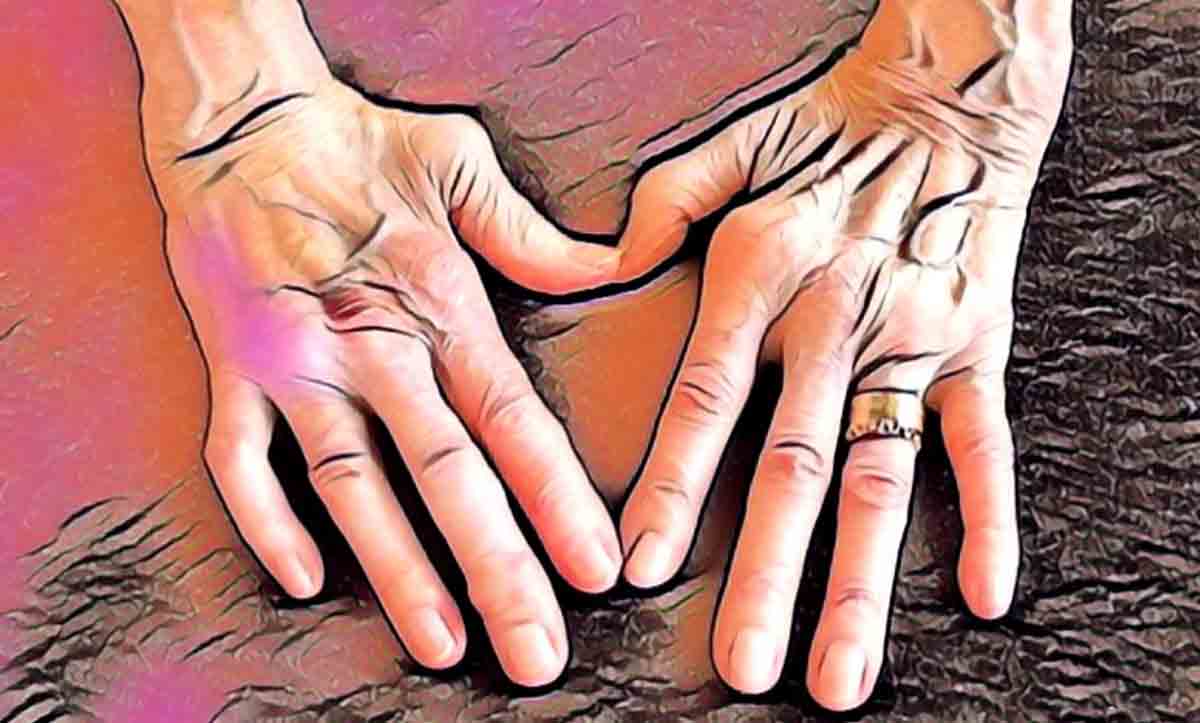What is Rheumatoid Arthritis?

Rheumatoid arthritis (RA) is a very common condition with an average incidence of 1%. It is three to five times more common in women than men. This disease is frequently seen in the middle of the age of 40-50 and is also frequently encountered after the age of 60. It can occur in anyone, including children.
rheumatoid arthritis is a chronic inflammatory disease that can affect more than just your joints. In some people, this can damage a wide variety of body systems, including the skin, eyes, lungs, heart, and blood vessels.
An autoimmune disorder, rheumatoid arthritis occurs when your immune system attacks the tissues of your own body. Rather than the wear and tear damage of osteoarthritis, rheumatoid arthritis affects the lining of your joints, causing painful swelling that can eventually lead to bone erosion and joint deformity. The inflammation associated with rheumatoid arthritis is what can wreak havoc on other parts of the body as well. While newer types of drugs have greatly improved treatment options, severe rheumatoid arthritis can still cause physical mania.
What kind of disease is rheumatoid arthritis?
 what is rheumatoid arthritis
what is rheumatoid arthritisRheumatoid arthritis (RA) is the most common inflammatory joint disease. It starts with the inflammation of the tissue (membrane) called “synovium” that covers the inner surface of the joints and can damage cartilage, bone, tendon (beam) and ligaments. The progressive disease can affect the internal organs as well as the joints. It is often multi-joint, long-period (chronic), but long-term silent periods can also be seen in the middle of attacks. This disease, the cause of which is not fully known, can vary greatly from person to person. It is usually a disease of young-middle-aged adults and is seen 3 times more in women than in men.
How does it differ from other joint diseases?
The most valuable feature that distinguishes rheumatoid arthritis from other joint rheumatism is some laboratory tests and which joints are involved. RA usually involves the wrist and many joints of the hand, but the joints near the nails (except the thumb) are not affected much. In osteoarthritis (calcification) and inflammatory rheumatism due to psoriasis, on the contrary, these joints near the nail get sick.
Elbow, shoulder, neck, jaw, hip, knee, ankle, and foot joints may also be involved in RA. Involvement in other parts of the spine other than the neck is rare. Often the joints on both sides of the body get sick together. That is, if several joints swell in the right hand, it is likely that there will be swelling and limitation of movement in the left hand joints as well.
What is the cause of rheumatoid arthritis?
In RA, the immune system is impaired. Our body perceives its own tissue as foreign and starts a war against it. Inflammatory cells are collected in the joints and elements (enzymes, antibodies, cytokines) that will damage the tissues are secreted from these cells.
Do genes play a role?
RA is not a genetic disease that is passed directly from parent to child. However, susceptibility to RA may be passed on through genes. It has been shown that many patients with RA have a certain genetic marker called HLA-DR4.
Does infection initiate rheumatoid arthritis?
Many researchers and physicians think that infection may play a role in the onset of RA, but it has not been proven. RA is not a contagious disease. It is assumed that a very common microbe in the environment causes the disease by impairing the immune system in individuals predisposed to RA.
What are the symptoms of RA?
The symptoms of rheumatoid arthritis can vary greatly from person to person. Quickly, in all patients, the joint symptoms continue in a chronic state, although fluctuations occur. In some individuals, the disease progresses more mildly; there are only occasional attacks. In some, it progresses more slowly and causes progressive destruction over time.
If you have RA, you will have increased warmth, swelling, tenderness, redness and pain in your affected joints. You may feel pain and stiffness in your joint movements, which are obvious especially in the morning. We call this morning stiffness – stiffness. The fact that the respite is long indicates that your disease is active. You will find that you are generally more beautiful during the day. If your disease lasts for a long time, deformities may occur in your joints.
RA can cause general malaise, especially during attacks. Decreased appetite, weight loss, sometimes mild fever, decreased strength, anemia may be seen. In approximately 20% of the patients, hardness called “nodules” may develop under the skin, in the pressure areas of the body. Although it can often be in the elbow, it can also be seen in other parts of the body, even in the internal organs.
How is RA diagnosed?
Early diagnosis of RA is very valuable. Because, starting treatment in this period minimizes permanent joint damage. For the diagnosis of RA, your detailed history should be taken by the doctor and your physical examination should be done. Certain laboratory tests and X-ray examinations may be ordered. The positivity of the test called “rheumatoid factor” reinforces the diagnosis. High erythrocyte sedimentation rate, low hemoglobin (anemia) are in the midst of other laboratory findings. It should be noted that these tests are only indicative. The definitive diagnosis is made by evaluating the patient as a whole by the doctor.
How is RA treated?
There is currently no definitive cure for RA. The ways used are aimed at relieving pain, reducing or stopping inflammation and joint damage, and improving the patient’s functions and quality of life.
Drug therapy in RA can be examined in 2 clusters;
1. Short-acting drugs to relieve complaints; aspirin, non-steroidal anti-rheumatic drugs, pain relievers, cortisone as needed.
2. Long-acting drugs; such as methotrexate, leflunamide, chloroquine-hydroxychloroquine, gold salts, cyclosporine, sulfasalazine, D-penicillamine, azathioprine, etanercept, infliximab and adalimumab.
All of these drugs should be monitored at regular intervals; It has side effects such as low blood cells, kidney and liver changes. These effects are controlled by adjusting multiple drug types and doses. It is very important that the patient is conscious about this issue.
The treatment is planned specifically for the patient; In this, the severity of the disease, accompanying health problems, and personal characteristics and needs are kept in the foreground. Rest is the most valuable part of the treatment of RA patients. It is recommended to rest the involved joints, especially in acute exacerbation periods. Apart from the acute period, the trainings given consistently when the patient feels himself/herself will benefit the patient.
Again, some easy tools called “splints” can be used to protect the functions of the joints and to prevent their deformities. Splints are quite effective in preventing deformities. You can also help prevent deformities by following some rules.
a. When doing work, be careful to use your large joints rather than small joints. eg; When opening the door, push with your arm, not with your hand, or open the jar with your hand, not with your fingers.
b. Try to distribute the load across multiple joints rather than a single joint. eg; When lifting a book, hold it with both hands and lift it.
c. Try to use your joints in their most “natural” position. Avoid excessive bending and straining.
In some patients, surgery may be required to correct deformities, reduce pain, or restore joint use.
There is a need for close cooperation between the physician and the patient at all stages of treatment decisions.
How Does Rheumatoid Arthritis Affect the Lungs?
- On-Site Comments















Comment